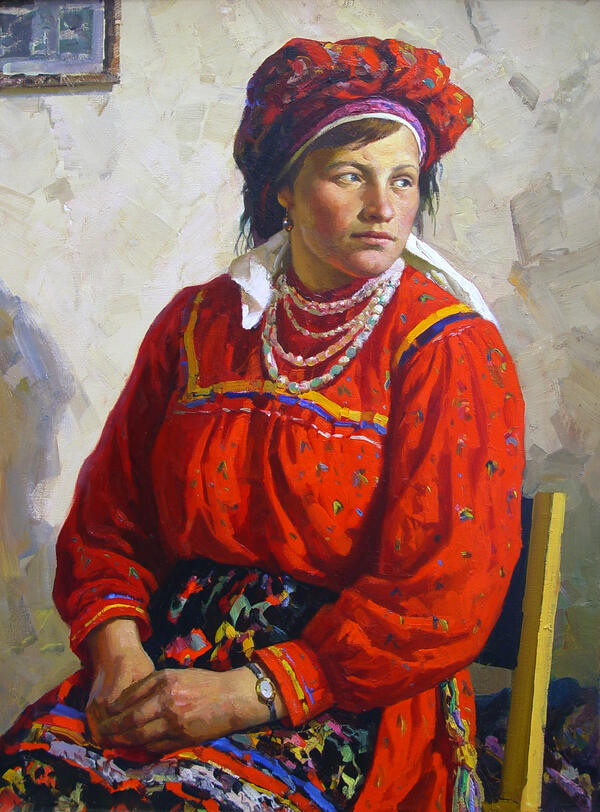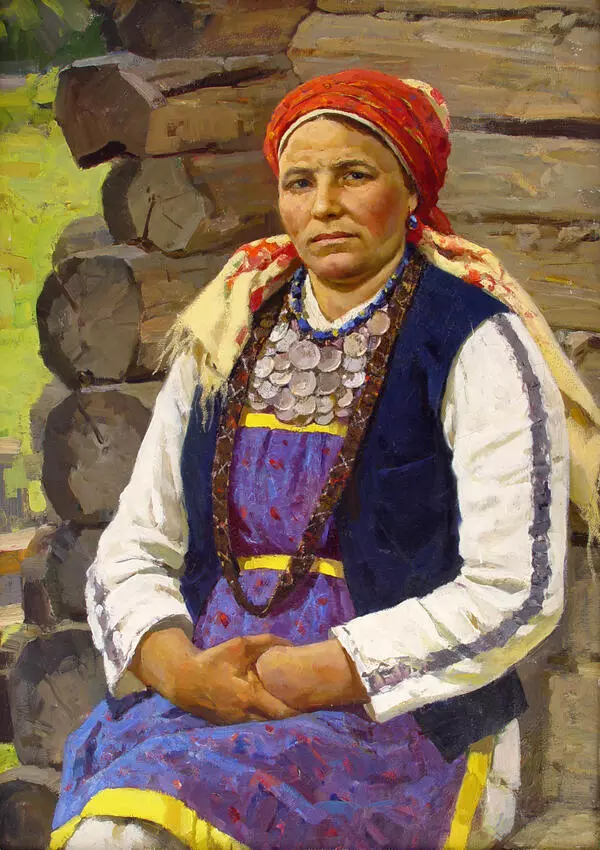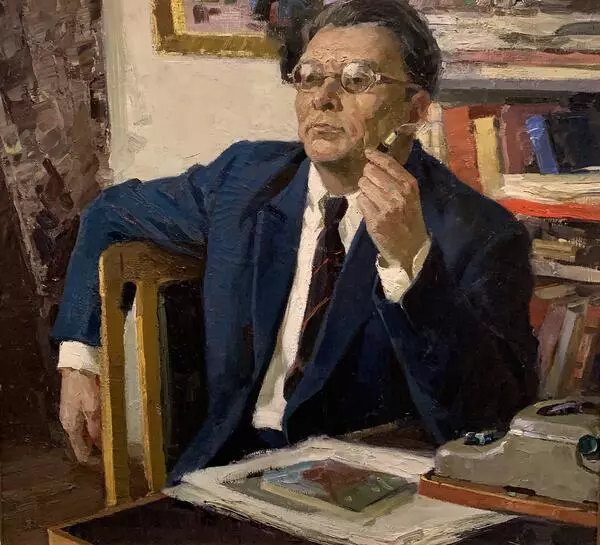Vladimir Ilyukhin’s approach to characterization shifted in his 1970s portraits to a greater degree of generalization. While preserving the individuality of his models, he also draws the viewer’s attention to the typical, folk features. In his works, the artist strives to capture national specificity and originality of culture.
When painting portraits, Vladimir Ilyukhin often depicts from a low angle thereby achieving monumental expressiveness. The composition of these works is built in such a way that the figure of the sitter fills almost the entire surface of the canvas.
The “Portrait of Young Milkmaid Anya Piksina” is distinguished by a dramatic tone of the image, its deep meaning and monumentalism. The psychological state of the heroine combines self-esteem with modesty and an intensely clear worldview.
The vertically-oriented composition and the milkmaid’s tilted head create a feeling of peaceful dignity. The smooth and clean line of her oval face, clear eyes, chaste lips speak of humility and restraint of the model. The young woman is dressed in a national Moksha costume, her head is covered with a bright scarf, she wears four beaded necklaces on her neck.
Vladimir Ilyukhin follows his principle of characterization: the artist reliably depicts the main qualities of the model, but at the same he seeks to celebrate the sitter’s character. The artist notices the best in a person and strives to convey and enhance it in his work.
By emphasizing the most valuable qualities of the model, the painter ennobles the appearance of his heroes. The portrait becomes the artist’s creative reflection about the fate of a person; the portrait of an individual, thus, can be perceived as a philosophical generalization.
In the portrait of Anya Piksina, the artist achieves a certain degree of generalization when one image becomes a portrait of hundreds. In his model, the painter highlights such universal qualities as intelligence, dignity, inner calmness, and femininity. To achieve it, Vladimir Ilyukhin chooses the most suitable expressive means: harmonically clear, simple forms, a combination of bright and delicate colors, and a soft portrayal of light and air.
When painting portraits, Vladimir Ilyukhin often depicts from a low angle thereby achieving monumental expressiveness. The composition of these works is built in such a way that the figure of the sitter fills almost the entire surface of the canvas.
The “Portrait of Young Milkmaid Anya Piksina” is distinguished by a dramatic tone of the image, its deep meaning and monumentalism. The psychological state of the heroine combines self-esteem with modesty and an intensely clear worldview.
The vertically-oriented composition and the milkmaid’s tilted head create a feeling of peaceful dignity. The smooth and clean line of her oval face, clear eyes, chaste lips speak of humility and restraint of the model. The young woman is dressed in a national Moksha costume, her head is covered with a bright scarf, she wears four beaded necklaces on her neck.
Vladimir Ilyukhin follows his principle of characterization: the artist reliably depicts the main qualities of the model, but at the same he seeks to celebrate the sitter’s character. The artist notices the best in a person and strives to convey and enhance it in his work.
By emphasizing the most valuable qualities of the model, the painter ennobles the appearance of his heroes. The portrait becomes the artist’s creative reflection about the fate of a person; the portrait of an individual, thus, can be perceived as a philosophical generalization.
In the portrait of Anya Piksina, the artist achieves a certain degree of generalization when one image becomes a portrait of hundreds. In his model, the painter highlights such universal qualities as intelligence, dignity, inner calmness, and femininity. To achieve it, Vladimir Ilyukhin chooses the most suitable expressive means: harmonically clear, simple forms, a combination of bright and delicate colors, and a soft portrayal of light and air.









